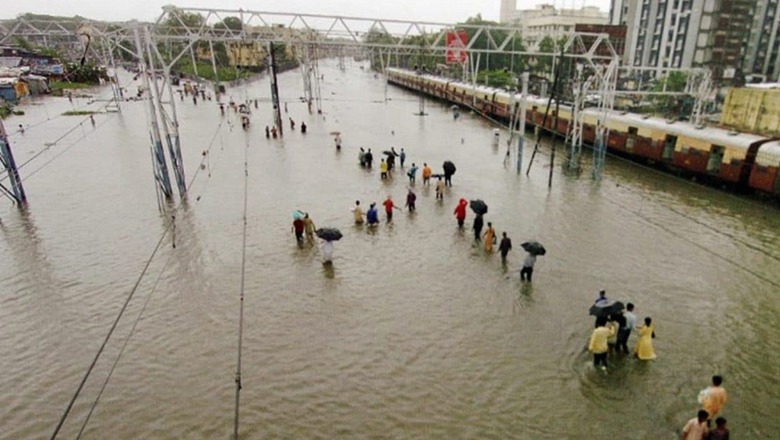
views
18 YEARS OF JULY 26, 2005 MUMBAI FLOODS: July 26, 2005 floods is remembered by Mumbaikars as one of the darkest days in the city’s history. On that fateful Tuesday, Mumbai faced an unprecedented disaster as heavy rains drenched the financial metropolis, wreaking havoc in its wake.
THE RAINFALL
Rainfall began in a normal pace as the clock struck midnight, eventually turning into a relentless deluge. Mumbai received a whopping 37 inches of rain in mere 24 hours, with 26 inches pouring down in just four hours. This downpour topped the annual rainfall of various places around the country, including the famed Cherapunji, which is recognised for having the world’s highest rainfall.
The catastrophe was caused by the eighth-heaviest 24-hour rainfall ever recorded, 944 mm (37.17 inches), which inundated the city and continued sporadically into the next day. Rainwater and sewage mixed, contaminating the city’s water supply. As a result, the government ordered that housing societies add chlorine to their water tanks to provide safe drinking water.
THE DEATHS
The city’s infrastructure was overwhelmed by the onslaught. Floodwaters rose, drowning low-lying roads and residences. Over 1000 lives were tragically lost, and numerous homes were damaged, leaving the city paralyzed. Lakhs of people were trapped far from their homes, desperately looking for transportation in the thick of the turmoil. Tens of thousands of animal corpses drifted in the floodwaters, increasing fear of potential pandemic.
THE TRANSPORTATION DISRUPTION
The transit network, which is normally Mumbai’s lifeline, was crippled. The floodwaters destroyed 37,000 auto rickshaws, 4,000 taxis and 900 BEST buses, while forcing 10,000 trucks and tempos off the road. Local trains, the major source of the city’s daily commute, were also halted owing to water-logged tracks.
THE ECONOMIC LOSSES
The floods caused extensive damage to property, infrastructure, and businesses. The estimated economic loss from the event amounted to billions of dollars.
WHY MUMBAI EXPERIENCES HEAVY RAIN?
Experts explained to The Weather Channel that the climatic events leading to the calamity were not unexpected during the monsoon season. Prof. Sridhar Balasubramanian of IIT Bombay’s Department of Mechanical Engineering stated that a low-pressure region over the north Bay of Bengal, bringing winds from the Arabian Sea, might always pose a significant threat.
“The resultant westerly winds activate an off-shore trough along the west coast which creates an upper-level cyclonic circulation. The moisture incursion is enhanced due to the upper-level cyclonic circulation leading to the formation of rain-bearing clouds. This is the same dynamics behind most of the heavy rain spell over Mumbai,” he explained to the news outlet.
A low-pressure area slowly intensified into a well-defined low in the days leading up to July 26, 2005, carrying moisture from the Arabian Sea. The convergence of these meteorological systems resulted in the creation of dense clouds, resulting in heavy rain for almost 6-8 hours.




















Comments
0 comment